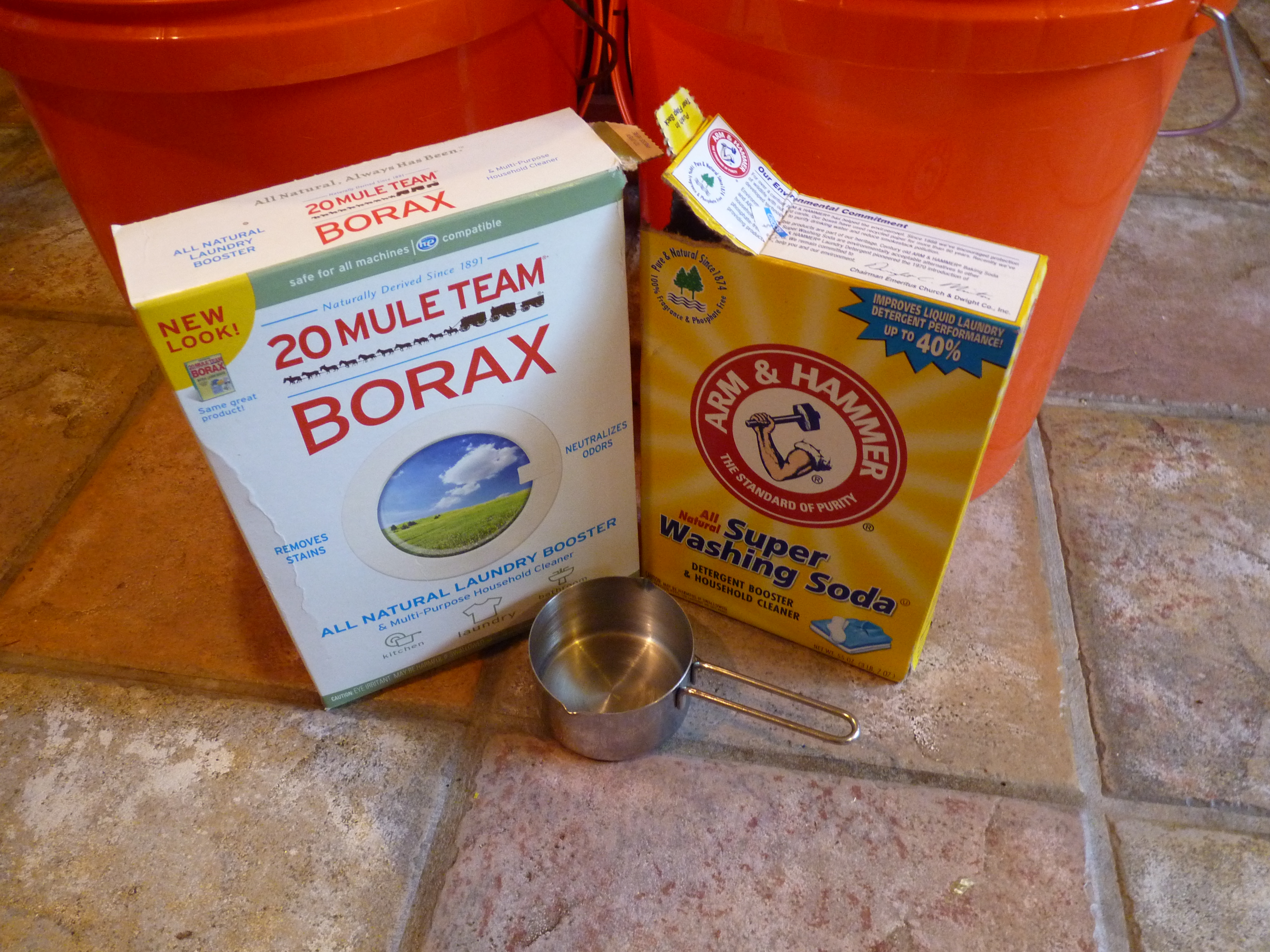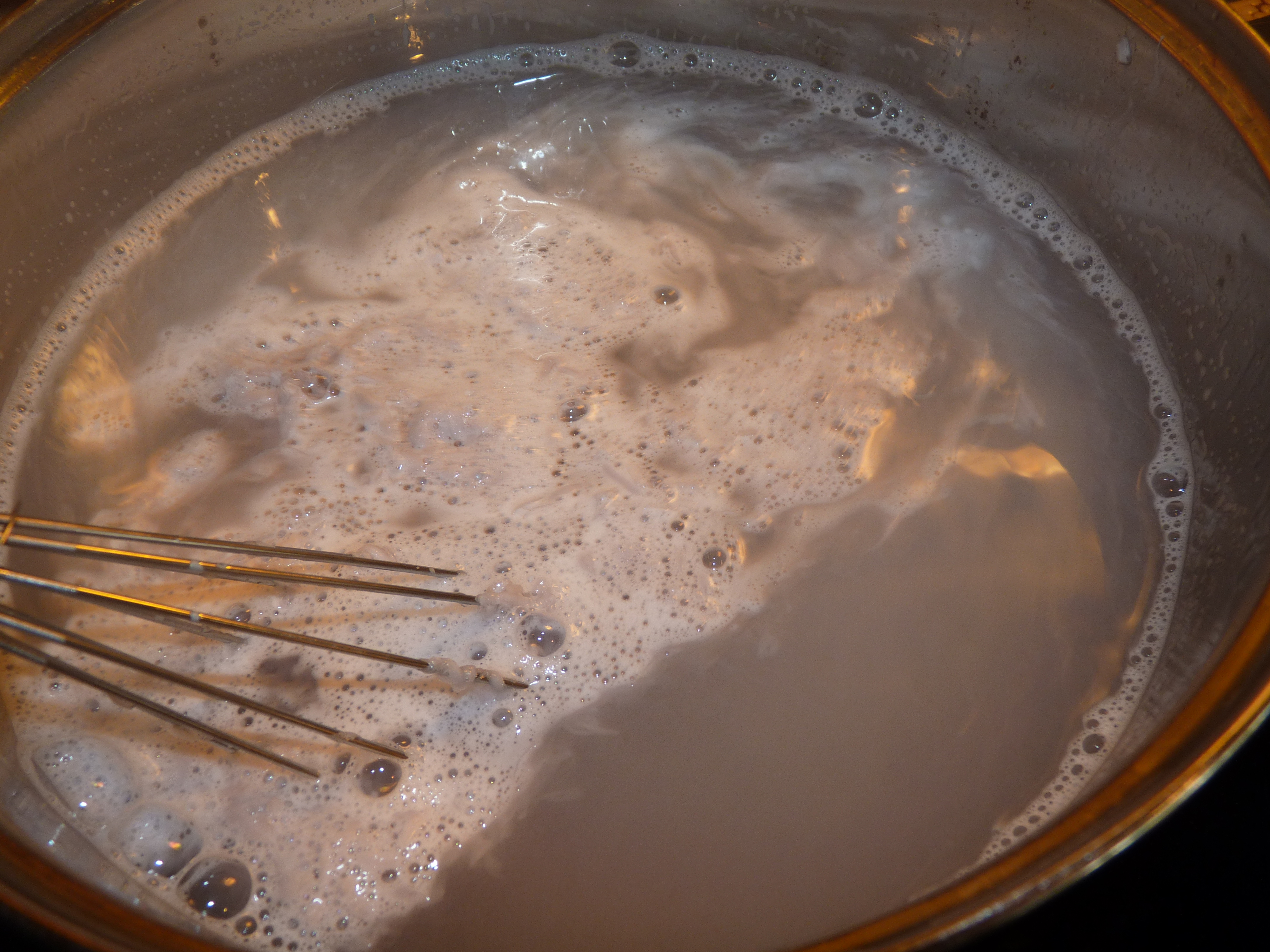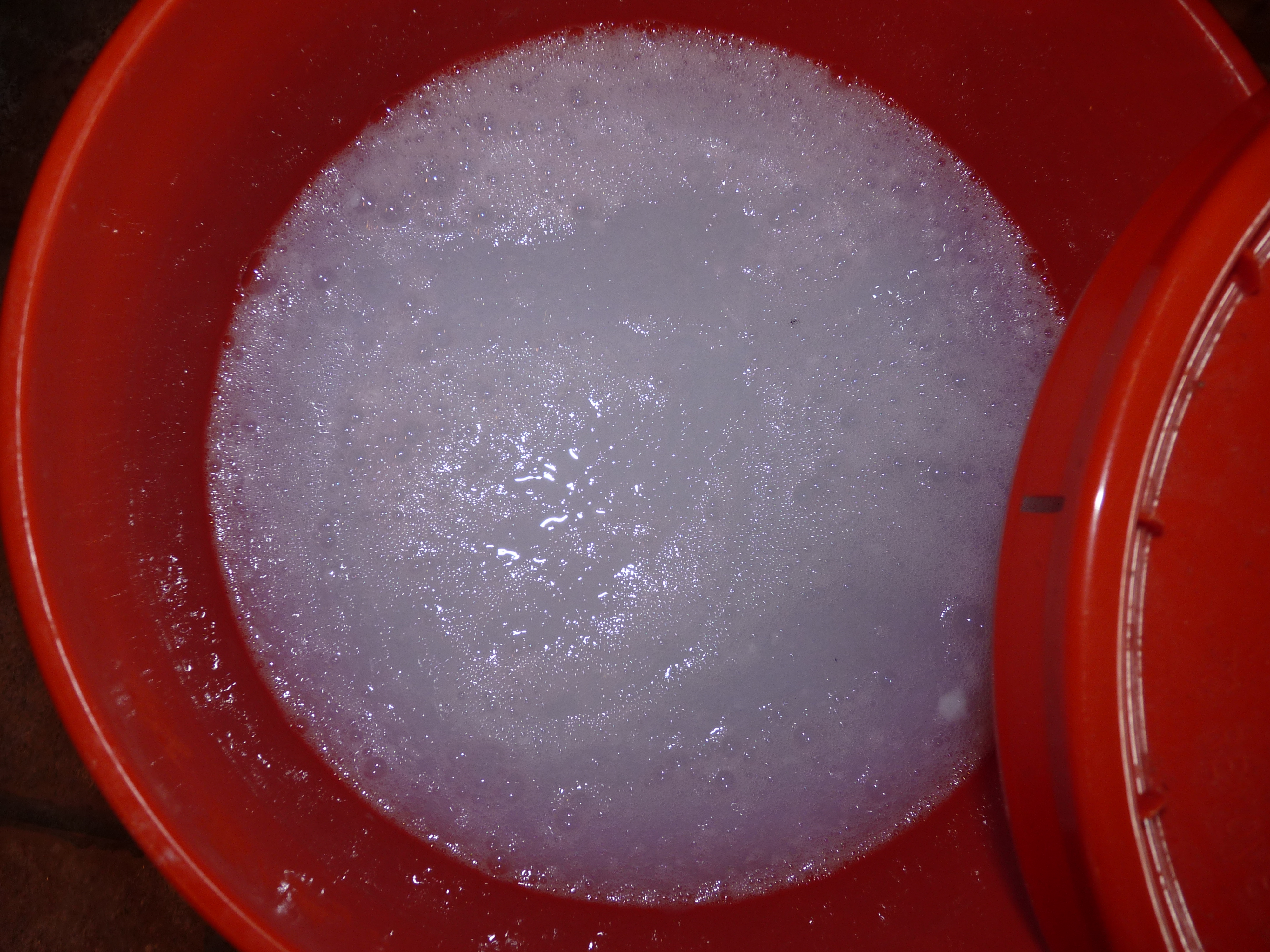Since its still winter, and I’m making things rather than growing things, I wanted to share a laundry detergent recipe with you!
Current laundry detergents are terrible for the environment. They contain a number of chemicals, including phosphates (which can cause explosive algae blooms and eutrophication, among other issues), sulfonates (which biodegrade very slowly and are toxic to plants/animals/us) and other chemicals. Part of the challenge in purchasing a traditional detergent like Tide, Downy, etc. is that none of these companies are required to list the chemicals contained. There is a very good chance that, with each load of laundry or automatic dishwasher load you run, you are slowly destroying fragile ecosystems found in rivers, coral reefs, or even your own backyard.

A host of environmentally-responsible companies have created phosphate-free and naturally-based, biodegradable detergents. The problem is, for many, they are simply out of your budget.
Here are two recipes that I’ve used and adapted that really *work* for both your laundry detergent and automatic dishwasher (which is an entirely other issue, lol).
H0memade Laundry Detergent
Ingredients:
- 1 cup Arm and Hammer Super Washing Soda*
- 1 cup Borax (20 mule team brand is the most common)
- 1 bar of soap (some recipes call for Fels Naptha soap, but you can use anything. I have used Castile soap, Ivory soap, etc. I currently use a locally produced Goat’s Milk Soap)
- Optional: Essential oils (I like lavender and/or orange)
*This can be tricky to find. This is NOT baking soda, and baking soda will NOT work! Look in local grocery stores–it will be in the laundry detergent aisle. I’ve had success at my local Kroger store.

Materials:
- 5 gallon bucket with lid (you can buy one of these for cheap at a yard sale or home improvement store).
- 1 cheese grater
- 1 large pot
- measuring cups
- Gallon jug (or you can approximate, as I often do)
- A stirring mechanism- I prefer a whisk tied to a paint stirrer.
- Rubber gloves (to protect hands during process)
Instructions:
1. Grate up your soap with the cheese grater and add about 1/2 gallon of hot water into your pot.
2. Put the pot on the stove and bring your soap to a boil. Stir it up with the wisk, making sure that your soap gratings are fully dissolved. FYI, if you let this boil over, you’ll have a bit of a soapy mess. Been there, done that!
3. While your soap is dissolving, add 1/2 gallon cold water and 1 cup borax and 1 cup super washing soda in your bucket. Mix these well.
4. After your soap has dissolved add in your gallon of soapy water. Mix well–again using the whisk. Be sure you don’t touch the stuff at this point–the Arm and Hammer Washing Soda and Borax are kinda caustic.

5. Optional: If you want to add any scents, like Lavender essential oil, go ahead now! Add about 30 drops, or to your liking.
6. Add the last two gallons of water (cold). Stir everything up.
7. Now, over the next 12 hours or so, everything will cool and you’ll see the detergent starting to gel. As it gels, stir it up with the whisk. If you catch it at the right time and stir it, you’ll end up with a wonderful, detergent!
8. Add 1 cup of your detergent to each load!
H0memade Dishwashing Detergent
Borax and Arm and Hammer Super Washing Soda also do a great job in cleaning your dishes in a automatic dishwasher! Just add 1/2 tablespoon of each (in powder form) to your dishwasher!




Hey! I am super interested in making the dish detergent but I think the end of your post got cut off?!?
Sorry! I updated it and it should be fine now :).
Hi there! Someone in my Myspace group shared this website with us so
I came to take a look. I’m definitely enjoying the information. I’m bookmarking and will be tweeting this to my
followers! Superb blog and brilliant design.
Thank you so much for your kind comments, Isaac! I’m happy that you’ve found the blog!
Hey there! I realize this is kind of off-topic but
I needed to ask. Does managing a well-established blog like yours take a lot of work?
I’m completely new to running a blog however I do write in my diary every day. I’d like to start a blog so I will be
able to share my own experience and thoughts online. Please let me know if you have any recommendations
or tips for brand new aspiring blog owners. Thankyou!
A sewage treatment plant works to remove suspended solids
and BOD (biochemical oxygen demanding waste)-this helps
to lessen fish kill because of eutrophication or the diminishing oxygen levels which
can harm marine life. On the other hand, centralized
systems are noticed to be expensive in the long run. The biological infiltration uses two types of bacteria:
the bacteria that oxidise ammonia to nitrite (nitrosomonas)
and the bacteria that oxidise nitrite to nitrate (nitrobacter).
I have used this recipe for my own clothes and like it very much, thank you for sharing this. 🙂 My husband has found, though, that with his exercise and work clothes, including towels, this detergent does NOT get the smells out. So you have some suggestions? Thank you, again 🙂
Yes, if you use 2 cups of white vinegar in the rinse cycle, it should really help with the smell. If they are really funky, though, you might want to instead soak them in some diluted vinegar for a while. The commercial laundry detergents often cover up funky smells with strong perfumes, but vinegar works the best :).